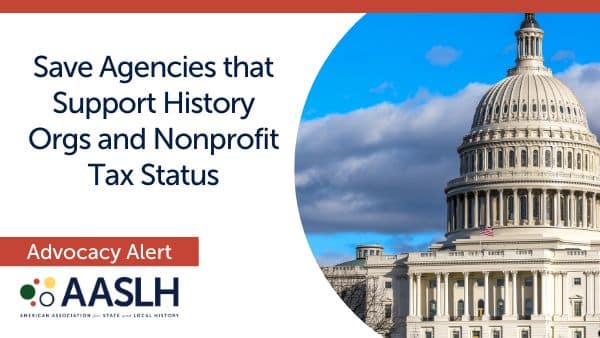Generally speaking, CEO positions are vacant for one or more of the following reasons:
- CEO with long tenure (10 years and over) dies, retires, or moves on to another position.
- CEO with long tenure (10 years and over) has done an admirable job, but recognizes s/he needs to move on.
- The organization’s leadership pushes out a not so successful CEO with long tenure.
- The CEO has been with the organization only a short period of time and s/he or the organization realizes the match was not a good one.
Each of these scenarios has different implications for the Interim CEO experience. But they all have this in common – implementing the change is a tricky one that impacts your workforce, clients, partners, and others.
Based on broad experience, AASLH estimates CEO searches typically last between four months and one year. AASLH’s experience shows that medium-sized organizations report a period of about eight months from the time the CEO announces his/her departure and the start of the new CEO’s term. Larger organizations take up to one year. Some organizations reopen their searches when they are not successful the first time around, costing the institutions over two years in momentum. Small and sometimes medium-sized organizations often conduct their own searches and “race” through the selection process. Organizations of all sizes often do not use the transition period to their advantage.
Many nonprofits assign a member of the existing staff as the Acting CEO. Many who have served as an Acting CEO report their organizations can only expect a caretaker level of activity, maintaining current programs and projects. In contrast, an Interim CEO is in a much better position to engage stakeholders in assessment and positioning and to coach the board through the challenging process of recruiting and selecting a new CEO. An Interim CEO can:
- Reassure stakeholders, especially donors, members, and the media, that prudent leadership and stewardship will be honored in the interim.
- Assure stakeholders that s/he is not a permanent fixture or a candidate for the vacancy, but rather brings no agenda to the table other than stabilization.
- Coach board members in areas where the board has unrealistic expectations of the organization or its leadership. An Interim CEO can put the brakes on strategies that are high risk in areas where the organization cannot tolerate the risk.
- Address personnel issues, including unacceptable performance expectations and standards, unclear lines of authority and responsibility, dysfunctional working relationships, ineffective organizational structures, ineffective internal communications, fragmentation and silos, etc.
- Assess effectiveness of programs and their contribution to mission and/or financial health and the allocation of resources to various programs, sharpen decision making and shift priorities, and evaluate “pet projects” of the staff and board that may be difficult for permanent leadership to challenge.
- Assure staff of confidentiality identifying and addressing issues that have eroded staff morale; providing confidence, stability, and momentum to reduce unwanted staff turnover during the transition, and keep the staff apprised on the search for a permanent CEO.
- Deal with staff turnover that often happens with the departure of the CEO.
- Prepare the organization to receive a new CEO, coach the board on creating a positive relationship with the new CEO, including performance expectations, their role in creating an environment for success, appropriate communication, and organizational structures.
An Interim CEO will enable staff, trustees, members, media, and the public to see the transition as an opportunity for growth and a time to move forward. An Interim CEO sends a powerful message that the organization takes its leadership and future direction seriously and can inspire, restore, and maintain confidence in an organization during a critical time.
Things to remember when hiring an Interim CEO
- Having a succession plan in place will help the process move.
- Make sure the candidates for Interim CEO are thoroughly vetted and interviewed.
- Act quickly, so stakeholders know the organization is in front of the process.
- Develop a job description for the Interim CEO that outlines organizational expectations, but doesn’t tie his/her hands in how to meet them. For example, the organization may want its Interim CEO to take the board through an evaluation of its operations and/or programs. Or it may want business as usual, in which case it should think carefully about your decision to hire an Interim CEO.
- Just because you hire an Interim CEO doesn’t mean you shouldn’t move through the transition period to the new CEO quickly and with purpose. But not so quickly that you make mistakes.
- Offer results-linked remuneration and decide if that remuneration will include a housing allowance, car, etc. Be sure the organization and the Interim CEO are on the same page before s/he shows up in town!
- Develop a communications plan that lets the community and stakeholders know what’s going on and where you are in the process.
Your letter of agreement with the Interim CEO should include, at a minimum, consider the following items:
- Estimated time period, including date expected on duty.
- Total remuneration, including housing allowance, car, etc., if applicable
- Operational responsibilities, and let him/her know if there are any limitations to those responsibilities (i.e., the right to fire an employee, the right to start and/or cancel programs and/or services).
- Planning, stakeholder, and governance responsibilities (including fundraising).
- Social and civic responsibilities.
- Process for reporting and decision making.
- Organizational chart showing who reports to whom, including the Interim CEO.
- Consider a flexible schedule that allows the Interim CEO the ability to go home for long weekends.
Terry Davis
AASLH President & CEO



